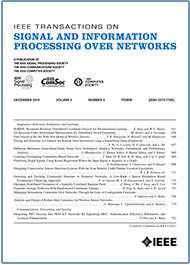- Our Story
- Publications & Resources
- Publications & Resources
- Publications
- IEEE Signal Processing Magazine
- IEEE Journal of Selected Topics in Signal Processing
- IEEE Signal Processing Letters
- IEEE Transactions on Computational Imaging
- IEEE Transactions on Image Processing
- IEEE Transactions on Information Forensics and Security
- IEEE Transactions on Multimedia
- IEEE Transactions on Signal and Information Processing over Networks
- IEEE Transactions on Signal Processing
- IEEE TCI
- IEEE TSIPN
- Data & Challenges
- Submit Manuscript
- Guidelines
- Information for Authors
- Special Issue Deadlines
- Overview Articles
- Top Accessed Articles
- SPS Newsletter
- SigPort
- SPS Resource Center
- Publications FAQ
- Blog
- News
- Dataset Papers
- Conferences & Events
- Community & Involvement
- Professional Development
- For Volunteers
- Information for Authors-OJSP
-
Home
Conferences Events IEEE Signal Processing Magazine IEEE SPL Article IEEE TIFS Article IEEE TMM Article IEEE TSP Article Jobs in Signal Processing Lectures Machine Learning Seasonal Schools Signal Processing News SPM Article SPS Distinguished Lectures SPS Newsletter Article SPS Webinar SPS Webinars SPS Webinar Series Webinar webinars
-
Our Story
What is Signal Processing?

The technology we use, and even rely on, in our everyday lives –computers, radios, video, cell phones – is enabled by signal processing. Learn More » -
Publications & Resources
-
SPS Resources
- Signal Processing Magazine The premier publication of the society.
- SPS Newsletter Monthly updates in Signal Processing
- SPS Resource Center Online library of tutorials, lectures, and presentations.
- SigPort Online repository for reports, papers, and more.
- SPS Feed The latest news, events, and more from the world of Signal Processing.
-
SPS Resources
-
Conferences & Events
-
Community & Involvement
-
Membership
- Join SPS The IEEE Signal Processing Magazine, Conference, Discounts, Awards, Collaborations, and more!
- Chapter Locator Find your local chapter and connect with fellow industry professionals, academics and students
- Women in Signal Processing Networking and engagement opportunities for women across signal processing disciplines
- Students Scholarships, conference discounts, travel grants, SP Cup, VIP Cup, 5-MICC
- Young Professionals Career development opportunities, networking
- Get Involved
-
Technical Committees
- Applied Signal Processing Systems
- Audio and Acoustic Signal Processing
- Bio Imaging and Signal Processing
- Computational Imaging
- Image Video and Multidimensional Signal Processing
- Information Forensics and Security
- Machine Learning for Signal Processing
- Multimedia Signal Processing
- Sensor Array and Multichannel
- Signal Processing for Communication and Networking
- Signal Processing Theory and Methods
- Speech and Language Processing
- Technical Working Groups
- More TC Resources
-
Membership
-
Professional Development
-
Professional Development
- Signal Processing Mentorship Academy (SigMA) Program
- Micro Mentoring Experience Program (MiME)
- Distinguished Lecturer Program
- Distinguished Lecturers
- Distinguished Lecturer Nominations
- Past Lecturers
- Distinguished Industry Speaker Program
- Distinguished Industry Speakers
- Distinguished Industry Speaker Nominations
- Industry Resources
- IEEE Training Materials
- Jobs in Signal Processing: IEEE Job Site
-
Career Resources
- SPS Education Program Educational content in signal processing and related fields.
- Distinguished Lecturer Program Chapters have access to educators and authors in the fields of Signal Processing
- Job Opportunities Signal Processing and Technical Committee specific job opportunities
- Job Submission Form Employers may submit opportunities in the area of Signal Processing.
-
Professional Development
-
For Volunteers
-
For Board & Committee Members
- Board Agenda/Minutes* Agendas, minutes and supporting documentation for Board and Committee Members
- SPS Directory* Directory of volunteers, society and division directory for Board and Committee Members.
- Membership Development Reports* Insight into the Society’s month-over-month and year-over-year growths and declines for Board and Committee Members
-
For Board & Committee Members
Popular Pages
Today's:
- Access Restricted
- Information for Authors
- (ASRU 2025) 2025 IEEE Automatic Speech Recognition and Understanding Workshop
- Submit a Manuscript
- Membership
- IEEE Transactions on Information Forensics and Security
- IEEE Transactions on Multimedia
- Information for Authors-SPL
- 5 Free e-books for machine learning mastery
- Call for Papers for ICASSP 2026 Now Open!
- Guidelines for Associate Editors
- (ICASSP 2025) 2025 IEEE International Conference on Acoustics, Speech and Signal Processing
- IEEE JSTSP Special Issue on Advancing Signal Processing Algorithm for Fluid Antenna Systems (FAS)
- IEEE Transactions on Image Processing
- 2025 14th International Symposium on Image and Signal Processing and Analysis (ISPA)
All time:
- Information for Authors
- Submit a Manuscript
- IEEE Transactions on Image Processing
- IEEE Transactions on Information Forensics and Security
- IEEE Transactions on Multimedia
- IEEE Transactions on Audio, Speech and Language Processing
- IEEE Signal Processing Letters
- IEEE Transactions on Signal Processing
- Conferences & Events
- IEEE Journal of Selected Topics in Signal Processing
- Information for Authors-SPL
- Conference Call for Papers
- Signal Processing 101
- IEEE Signal Processing Magazine
- Guidelines
Last viewed:
- Information for Authors
- IEEE Transactions on Information Forensics and Security
- SPS Scholarship Program
- Access Restricted
- (SiPS 2025) 2025 IEEE International Workshop on Signal Processing Systems
- Guidelines
- Submit a Manuscript
- (ICASSP 2025) 2025 IEEE International Conference on Acoustics, Speech and Signal Processing
- Publications
- Publications & Resources
- Call for Proposals: (ICASSP 2029) 2029 IEEE International Conference on Acoustics, Speech, and Signal Processing
- (ICASSP 2026) 2026 IEEE International Conference on Acoustics, Speech, and Signal Processing
- 2025 14th International Symposium on Image and Signal Processing and Analysis (ISPA)
- Occlusion Effect Cancellation in Headphones and Hearing Devices—The Sister of Active Noise Cancellation
- Governance Documents
On Bayesian Fisher Information Maximization for Distributed Vector Estimation
You are here
Publications & Resources
Transactions on Signal and Information Processing over Networks
For Authors
Top Reasons to Join SPS Today!
1. IEEE Signal Processing Magazine
2. Signal Processing Digital Library*
3. Inside Signal Processing Newsletter
4. SPS Resource Center
5. Career advancement & recognition
6. Discounts on conferences and publications
7. Professional networking
8. Communities for students, young professionals, and women
9. Volunteer opportunities
10. Coming soon! PDH/CEU credits
Click here to learn more.
On Bayesian Fisher Information Maximization for Distributed Vector Estimation
In this paper, we consider the problem of bandwidth-constrained distributed estimation of a Gaussian vector with linear observation model. Each sensor makes a scalar noisy observation of the unknown vector, employs a multi-bit scalar quantizer to quantize its observation, and maps it to a digitally modulated symbol. Sensors transmit their symbols over orthogonal-power-constrained fading channels to a fusion center (FC). The FC is tasked with fusing the received signals from sensors and estimating the unknown vector. We derive the Bayesian Fisher Information Matrix (FIM) for three types of receivers: (i) coherent receiver; (ii) noncoherent receiver with known channel envelopes; and (iii) noncoherent receiver with known channel statistics only. We also derive the Weiss–Weinstein bound (WWB). We formulate two constrained optimization problems, namely maximizing trace and log-determinant of Bayesian FIM under network transmit power constraint, with sensors’ transmit powers being the optimization variables (we refer to as FIM-max schemes). We show that for coherent receiver, these problems are concave. However, for noncoherent receivers, they are not necessarily concave. The solution to the trace of Bayesian FIM maximization problem can be implemented in a distributed fashion, in the sense that each sensor calculates its own transmit power using its local parameters. On the other hand, the solution to the log-determinant of Bayesian FIM maximization problem cannot be implemented in a distributed fashion and the FC needs to find the powers (using parameters of all sensors) and inform the active sensors of their transmit powers. We numerically investigate how the FIM-max power allocation across sensors depends on the sensors observation qualities and physical layer parameters as well as the network transmit power constraint. Moreover, we evaluate the system performance in terms of mean square error (MSE) using the solutions of FIM-max schemes, and compare it with the solut...
SPS Social Media
- IEEE SPS Facebook Page https://www.facebook.com/ieeeSPS
- IEEE SPS X Page https://x.com/IEEEsps
- IEEE SPS Instagram Page https://www.instagram.com/ieeesps/?hl=en
- IEEE SPS LinkedIn Page https://www.linkedin.com/company/ieeesps/
- IEEE SPS YouTube Channel https://www.youtube.com/ieeeSPS
Home | Sitemap | Contact | Accessibility | Nondiscrimination Policy | IEEE Ethics Reporting | IEEE Privacy Policy | Terms | Feedback
© Copyright 2025 IEEE - All rights reserved. Use of this website signifies your agreement to the IEEE Terms and Conditions.
A public charity, IEEE is the world's largest technical professional organization dedicated to advancing technology for the benefit of humanity.









